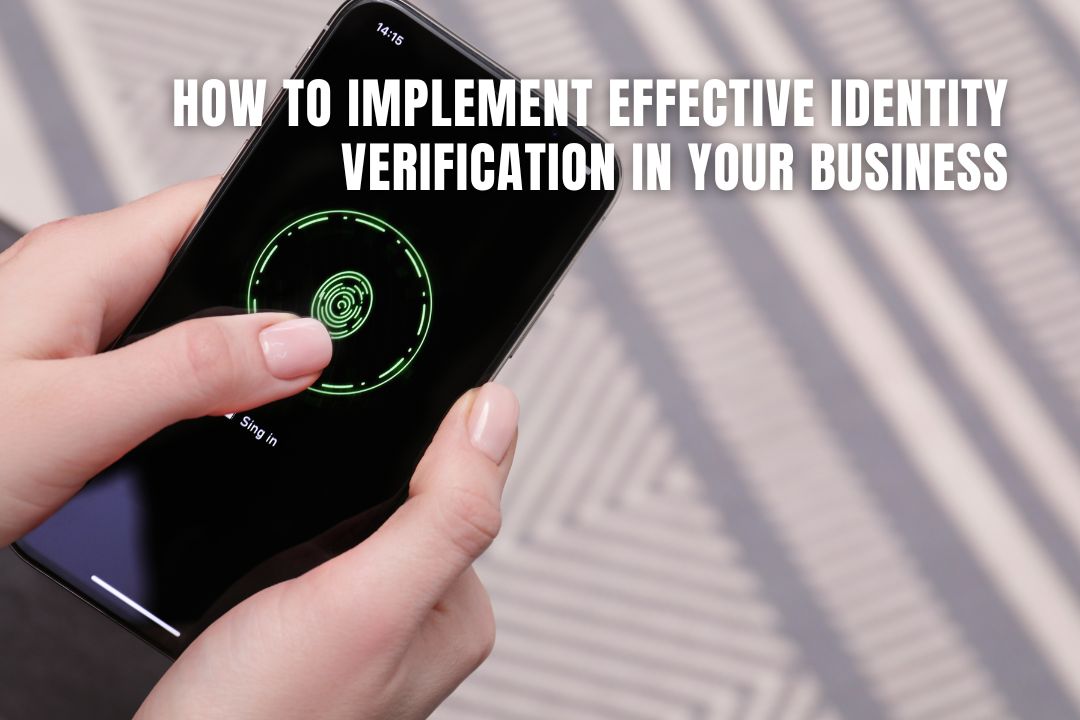
Every time you purchase wine at the grocery store or create an online bank account, you are probably participating in some form of identity verification, whether it's revealing your official ID or snapping a picture of your ID.
Similar identity verification procedures are used by both public and commercial organisations to forestall data breaches, fraudulent account creation, and identity theft. So, what's the process?
Requesting to see a government-issued identification document, such as a passport or driver's licence, is the simplest approach to verifying someone's identity. Identity verification is complete when the bearer produces a valid identification bearing their photograph.
One exception is when an individual attempts to establish a social media account without being there; in this case, digital identity verification is required. Here, the various service providers utilise varying degrees of security in their digital identity check processes.
By asking a series of security questions, knowledge-based authentication (KBA) ensures that an individual is who they claim to be. In most cases, the questions are made to be easy for that specific individual to answer yet challenging for everyone else. The number of dogs you own and the name of your favourite instructor are two examples.
A time constraint on answering the questions is another security measure for KBA. The fact that KBA is the most user-friendly verification technique is its biggest advantage. The biggest problem is that the solutions may be found just as easily through more conventional social engineering and social networking.
Combating identity fraud and theft requires using two-factor or multi-factor authentication. To use them, your client must input a code delivered to their phone or email. The procedure is easily identifiable and straightforward for customers to implement due to the widespread use of the verification technique.

A customer's email and phone number may be quickly and simply verified with two-factor authentication (2FA) or multi-factor authentication (MFA). In cases when you must verify that the consumer has not entered their data erroneously, this feature may be invaluable.
In addition to the standard username and password, users using two-factor or multi-factor authentication often need to supply a token, a kind of personal identity. Users should either have the token on hand or have committed it to memory, like an authentication number they got. The requirement for a token effectively discourages fraudulent behaviour.
When setting up new accounts or changing passwords, two-factor authentication is invaluable. Users are usually required to have their cell phones on them when this approach is used for authentication.
To verify an individual's identification, a credit bureau-based authentication technique uses data from at least one credit bureau. Companies like this keep many personal financial data, including SSNs, addresses, and credit card numbers.
Credit-based authentication does not compromise The user's experience, which employs a score to generate a definitive match. However, it might not work for those with limited credit histories, such as new immigrants and young adults.
Database ID techniques check an individual's ID using information from many databases. Because database technologies drastically cut down on human evaluation requirements, they are commonly employed to determine the user's risk level.

Due to the prevalence of fraudulent online identities, the biggest drawback of these approaches is that they do not verify the identity of the individual making the transaction.
Online verification employs methods such as computer vision, artificial intelligence, and human assessment to ascertain the user-relatedness of a government-issued ID. In most cases, this kind of authentication asks users to submit a selfie with their ID in hand, which confirms that the individual in the photo is indeed the one holding the ID.
Although online verification is quite safe, some people find it bothersome or annoying to have to upload a picture of their face and identification.
Using a person's unique physical traits, biometrics may confirm and authenticate their identification. Recognition of faces, voices, iris, retina, and fingerprints are all examples of biometric technology. Once the initial setup is complete, these approaches provide a great deal of ease to clients by eliminating the need to remember passwords, answer questions, etc.
But biometrics aren't perfect. Falsified biometric data is possible. Just think about it: people are sharing photos of you all over the internet. Unbeknownst to you, your voice can be captured. It is possible to steal fingerprints from databases by hacking. It can be much simpler to cheat certain institutions if these kinds of assets are in the possession of dishonest people.

National identity cards can be checked using online and in-person identity verification services. These services help prevent illicit activities, including money laundering and identity theft on financial services, e-commerce platforms, social networking sites, and forums. One example is the requirement to provide identification documents when opening a bank account. In the following scenarios, this procedure is mandatory and ensures full protection:
The banking industry heavily uses identity verification in the financial sector. For instance, this procedure is necessary when creating new accounts to safeguard businesses against identity fraud. Identity verification is also required for every financial process, including online sales and purchases.
Common places where providing ID is common:
Since biometrics provide high security and reduce the necessity for a physical ID, they are quickly becoming the principal verification method in the digital identity verification sector.
The rapid advancement of digital identity verification technology has the potential to make many hitherto commonplace activities obsolete, such as travelling without a physical passport, making purchases without a credit card, or renting a car without a driver's licence. Perhaps all that's needed is your smartphone and some biometric data.
Although its precise trajectory is uncertain, digital identity verification is the way of the future.
Related Articles: